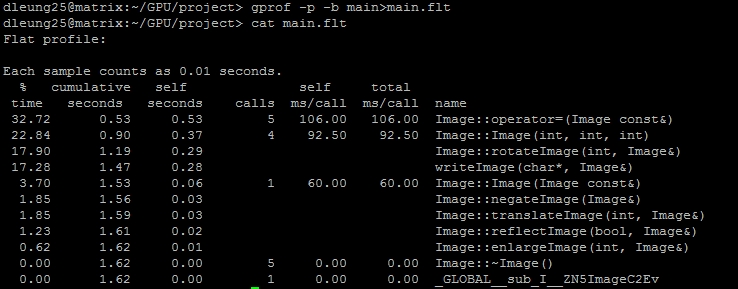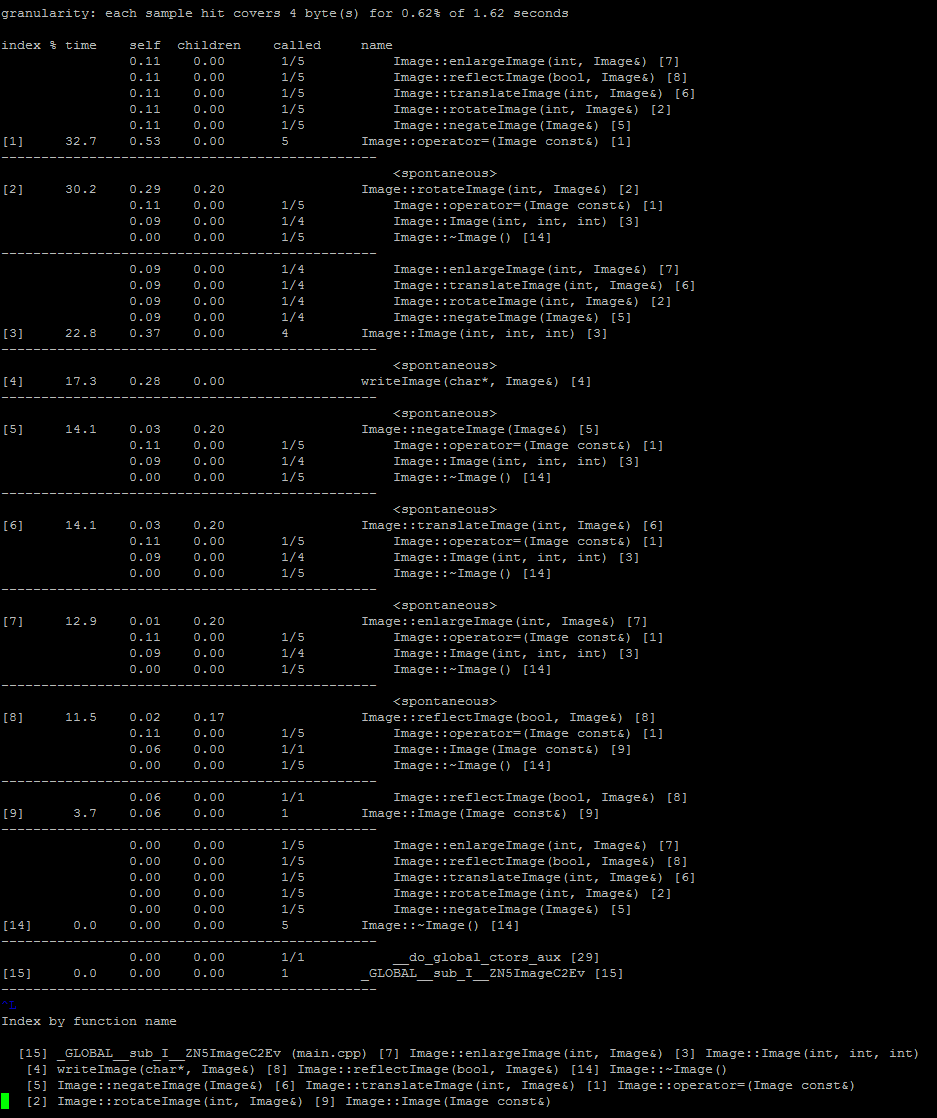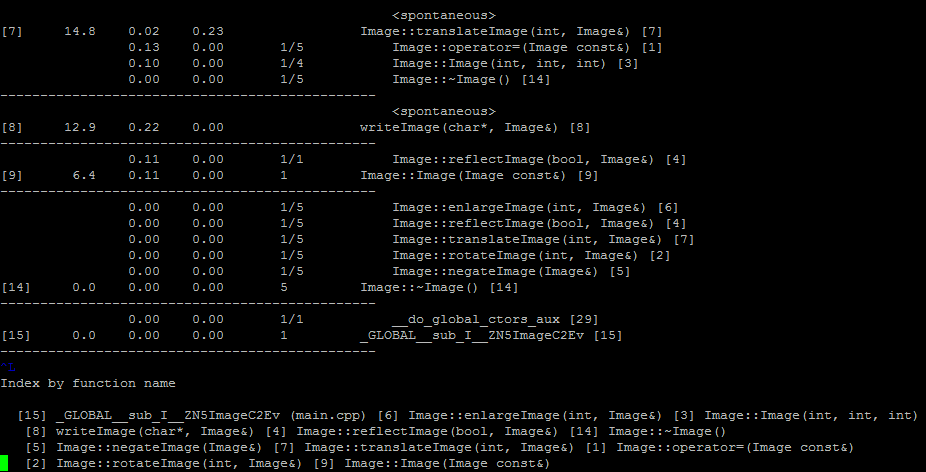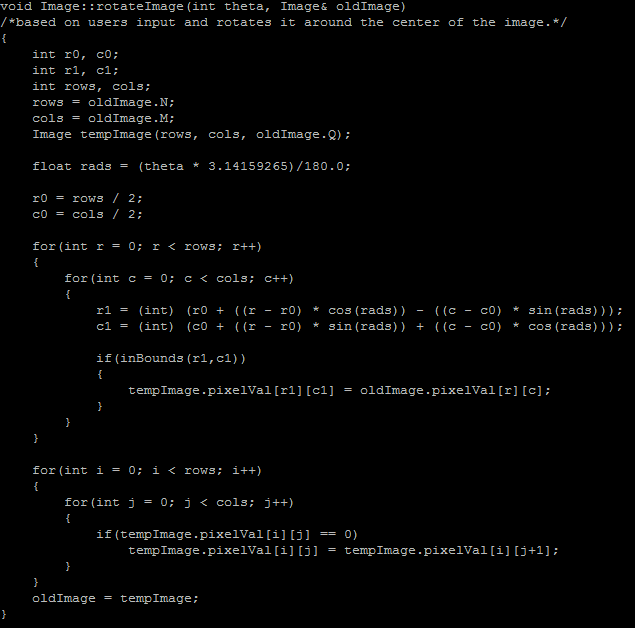Difference between revisions of "Three-Star"
(→Image Profiling) |
(→Image Profiling) |
||
| Line 22: | Line 22: | ||
>main a.pgm result.pgm | >main a.pgm result.pgm | ||
| − | Note: Enlarged image by max permitted by program (5) to get more viewable results, since the profile | + | Note: Enlarged image by max permitted by program (5) to get more viewable results, since the profile without enlarging it produces non-significant results |
[[File:Imageprofilesteps.png]] | [[File:Imageprofilesteps.png]] | ||
| Line 32: | Line 32: | ||
The results of the call graph | The results of the call graph | ||
| − | [[File: | + | [[File:Callgraphpt1.png]] |
| + | |||
| + | [[File:Callgraphpt2.png]] | ||
Rotate image function is one of the longer running functions and looks like it has potential for parallelization. | Rotate image function is one of the longer running functions and looks like it has potential for parallelization. | ||
Revision as of 22:28, 7 April 2018
GPU610/DPS915 | Student List | Group and Project Index | Student Resources | Glossary
Contents
Three-Star
Team Members
Progress
Assignment 1
Image Profiling
Chosen to profile image profiling as shown here: http://www.dreamincode.net/forums/topic/76816-image-processing-tutorial/ , using the sample program files (main/image.h/image.cpp)
pulled PGM sample files from here: https://userpages.umbc.edu/~rostamia/2003-09-math625/images.html
file sizes being 512x512, about 262 KB each file
>g++ -g -O2 -pg -o main main.cpp
>main a.pgm result.pgm
Note: Enlarged image by max permitted by program (5) to get more viewable results, since the profile without enlarging it produces non-significant results
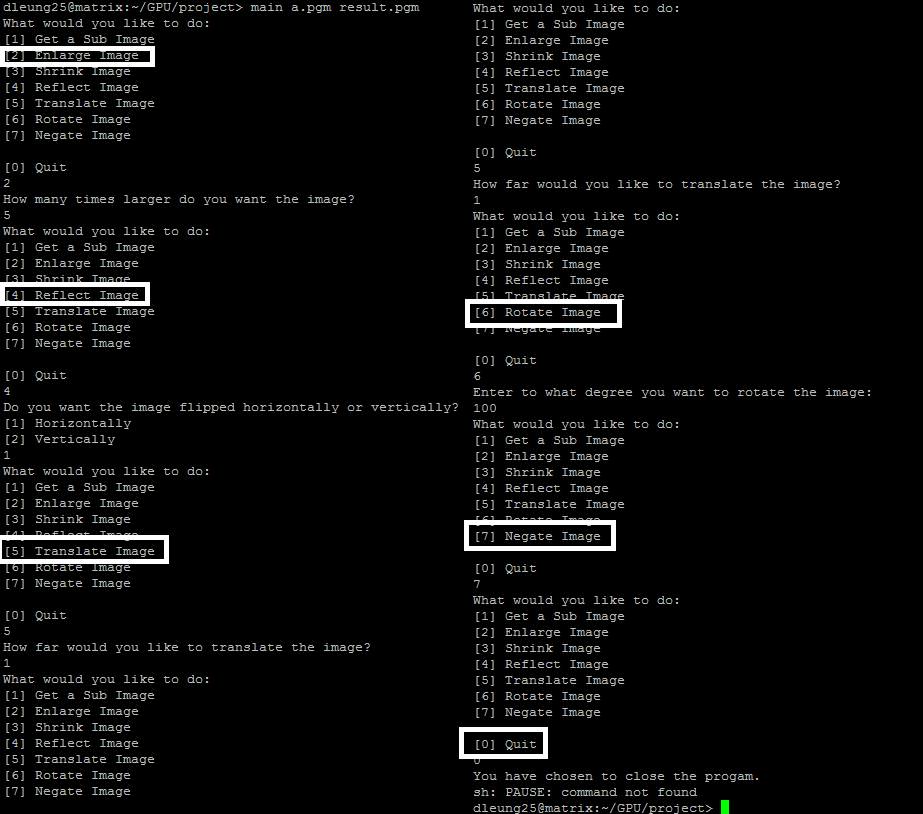
The results of the flat profile:
The results of the call graph
Rotate image function is one of the longer running functions and looks like it has potential for parallelization.
LZW Data Compression Algorithm
Timothy Moy profiled.
Original algorithm: https://codereview.stackexchange.com/questions/86543/simple-lzw-compression-algorithm
Summary of Profiles
| Size (MB) | Compress() time in seconds |
|---|---|
| 10 | 0.96 |
| 15 | 1.35 |
| 20 | 1.8 |
| 25 | 2.14 |
| 30 | 2.64 |
| 35 | 3.16 |
| 40 | 3.45 |
| 45 | 4.24 |
| 50 | 4.23 |
The compress function seems to have some room for improvement as can be seen in the source code below
void compress(string input, int size, string filename) {
unordered_map<string, int> compress_dictionary(MAX_DEF);
//Dictionary initializing with ASCII
for ( int unsigned i = 0 ; i < 256 ; i++ ){
compress_dictionary[string(1,i)] = i;
}
string current_string;
unsigned int code;
unsigned int next_code = 256;
//Output file for compressed data
ofstream outputFile;
outputFile.open(filename + ".lzw");
// Possible area for improvement via reduction
for(char& c: input){
current_string = current_string + c;
if ( compress_dictionary.find(current_string) ==compress_dictionary.end() ){
if (next_code <= MAX_DEF)
compress_dictionary.insert(make_pair(current_string, next_code++));
current_string.erase(current_string.size()-1);
outputFile << convert_int_to_bin(compress_dictionary[current_string]);
current_string = c;
}
}
if (current_string.size())
outputFile << convert_int_to_bin(compress_dictionary[current_string]);
outputFile.close();
}
Note the comment above the second for loop notes we can do something like this:
for (int i = 1; i < n; i+=) a[0] += a[i];
changed to
for (int s = 1; s <= n/2; s*=2) for(int j = 0; j < n; j +=2 * s) a[j] += a[j + s];
The first for loop is constant and probably won't show much improvement if we parallelize it. As such, the major hotspot in this function is the second for loop. This is especially true since the file might be very large and we may be dealing with millions of characters!
Conclusion
We decided to go with image profiling.
There are some possible issues with working with the simple-lzw-compression-algorithm and CUDA. You cannot use the C++ string type in a kernel because CUDA does not include a device version of the C++ String library that would be able run on the GPU. Even if it was possible to use string in a kernel, it's not something you would want to do because string handles memory dynamically, which would be likely to be slow.
Char explanation (replace tmr) - https://stackoverflow.com/questions/26993351/is-there-a-penalty-to-using-char-variables-in-cuda-kernels?utm_medium=organic&utm_source=google_rich_qa&utm_campaign=google_rich_qa
